Thus begins the quest for some homemade masa dough that will hopefully lead to mind-bending corn tortillas, tamales, and maybe even some pupusas.
We're taking some shortcuts here to prove that the process is accessible to anyone willing to give it a try, and so far the results are off the charts.
Homemade Masa Dough Recipe
First I want to mention that this method is new territory for me as well, so there might be some adjustments along the way. I'll update the posts as the process gets refined, so be sure to check back and re-read before starting a batch of your own.
For me, the Daniel Gritzer Serious Eats article on making masa using a food processor was the final impetus to get the dough rolling (worth a read). Masa dough is typically ground in a fine-grade industrial behemoth, but it's surprising how effective a standard food processor can be as long as you make a few tweaks to the process.
He also mentions a bag of organic corn that you can get on Amazon. And since dried field corn is surprisingly hard to come by this is what we're starting with. (Update: we recently made a batch using White Olotillo Corn and have also had success using plain ol' popcorn kernels.)
This is organic yellow field corn, and yes, that is 25 lbs. of corn, probably enough for more tortillas than you can eat over the next few years.
So how exactly does this transform into masa dough?
It's a good question and one that the ancient Meso-American cultures answered long before Chipotle colonized the process.
The nixtamalization process, in its simplest form, is treating corn with calcium hydroxide to make it more amenable to grinding. The outer skin of the kernel will partially dissolve and slip off after soaking in the calcium hydroxide. Beyond the reduction in labor, there's also an interesting health benefit in that the Cal increases not only the calcium content of the final product but also the niacin content.
Not to mention that nixtamalization creates that rich, authentic flavor that we tend to associate with traditional Latin cooking. So when asked in the quiz at the end of this post what the primary benefit of nixtamalization is...if your answer is "taste yum" then you are mostly there.
Okay, enough backstory...
Start by rinsing two cups of the dried corn in some cold water. Take a quick look for any stones or struggling kernels and discard them.
Add 1 tablespoon of the calcium hydroxide to 7-8 cups of water. You can get the calcium hydroxide at most Latin markets, and on Amazon you'll see it referred to as both Cal Mexicana and Pickling Lime.
Combine well with the water and then add the corn. (Note: it's best to use a non-reactive pot when using calcium hydroxide.)
Bring to a boil and then reduce heat to a simmer. Let simmer for 30 minutes or so, stirring occasionally. Make sure the corn is always submerged in liquid; you can always add more water if your pan calls for it.
When the outer skin of the kernels slip off easily then it's had enough cooking time.
You can also bite into the kernel. The outer portion will be slightly cooked but the inner portion remains dry and uncooked. Perfect!
Remove the pan from the heat, cover, and let it sit overnight at room temperature. This gives the calcium hydroxide time to do its job.
No one knows for sure exactly how long it needs, a minimum would probably be 6-8 hours. So yes, you could start it in the morning and use it for dinner if you wanted to, but I've just been letting it rest overnight, anywhere from 12-16 hours. After which it looks like this...
Drain the corn and then give it a good massage under some cold water.
Rub the corn between your hands to force the skins off the kernels. Most of them will slip off easily, but don't worry about getting rid of every last one. It's also worth replenishing the standing water a couple times until it starts to run clear.
And now the shortcut.
Instead of buying a fine-grade grinder, you can get by using a simple food processor. I'm using a smaller food processor so I'll grind it in two batches.
After starting with 2 cups of dried corn, you've now got about 4 cups of hydrated corn. So I'm adding 2 cups of the hydrated corn to a food processor along with 1/2 teaspoon of salt and 1/4 cup of water.
Give it a whirl. You might have to stop a few times to wipe down the sides.
And if it's not combining you can some additional water, 1-2 tablespoons at a time.
Eventually it will combine into a thick, dough-like substance. These batches took about 4-5 minutes each in the food processor and eventually turned into this blast from the past...
Look at the potential in that bowl! What do you see first? Tamales? Tortillas? The solution to all of life's problems?!!
The masa dough might be a little wet and that's okay, that comes with the territory of using a food processor to grind it.
And now I have both good news and bad news.
The good news is that I've already made a few batches of corn tortillas from this masa and they are delicioso. The bad news is that it would make this post way too long to include all the details here, so I'm going to do the corn tortillas in a separate post a few days from now (here it is). Here's what you'll end up with though if you've got corn tortillas on the brain...
Yowsa!
It's a simple process, but if the dough is too wet they are difficult to handle. Once you dry out the dough a bit then it's just a matter of flattening golfball sized rounds with a tortilla press or casserole dish...
...and cooking each side for 45-60 seconds.
And yes, after much experimenting (gorging), they can turn the simplest of tacos into something extraordinary.
But first things first...
Get some masa dough in the house! It will open up so many possibilities for your kitchen. Time to keep an eye out for some dried field corn 🙂
I'll put instructions in the recipe box below, but feel free to get in touch if you have any additional questions.
Buen Provecho.
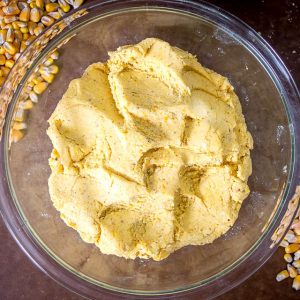
Homemade Masa Dough Using Yellow Field Corn
Ingredients
- 2 cups dried field corn
- 1 tablespoon calcium hydroxide
- 8 cups water
- 1 teaspoon salt
- 1/2 cup water (to grind the masa)
- 1/2 cup masa harina (optional)
Instructions
- Rinse 2 cups of dried field corn in cold water. Remove any stones or struggling kernels.
- Add 1 tablespoon of calcium hydroxide to 8 cups of water in a non-reactive pot (I used stainless steel). Combine well. Add the corn to this mixture.
- Bring to a boil and then reduce heat to a simmer. Cook for 30 minutes or so, stirring occasionally. When the skins of the kernels slip off easily then it's had enough cooking time.
- Remove from heat, cover, and let sit overnight at room temperature.
- The next day (or at least 6-8 hours later) drain the corn and massage it under running cold water. Use your hands to remove the skins from the kernels. Change the standing water a couple times until it starts to run clear.
- Drain the corn and add to a food processor. You'll need 1 teaspoon of salt and approximately 1/2 cup of water for the whole batch (as photographed above I ground it in two batches in a smaller food processor). Wipe down the sides of the food processor occasionally. It will need approximately 4-5 minutes to thoroughly combine, you can add splashes of water if it's not combining well.
- Use immediately or cover with plastic/foil and store it in the fridge.
- If you want to make tortillas with the masa dough, adding some masa harina to it will make it easier to handle. I added about 1/2 cup to this batch.
Notes
Disclaimer: Yes, there are affiliate links on this page. That means I get a small percentage of the sale if you decide to try out one of the linked products, at no additional cost to you. But my opinion is not for sale and I only recommend products that I actually use and trust. Email me if you have questions about this.
Still hungry?!
Want to receive Mexican Please recipes via email when they are posted? Sign up below to subscribe. All recipes are spam free.


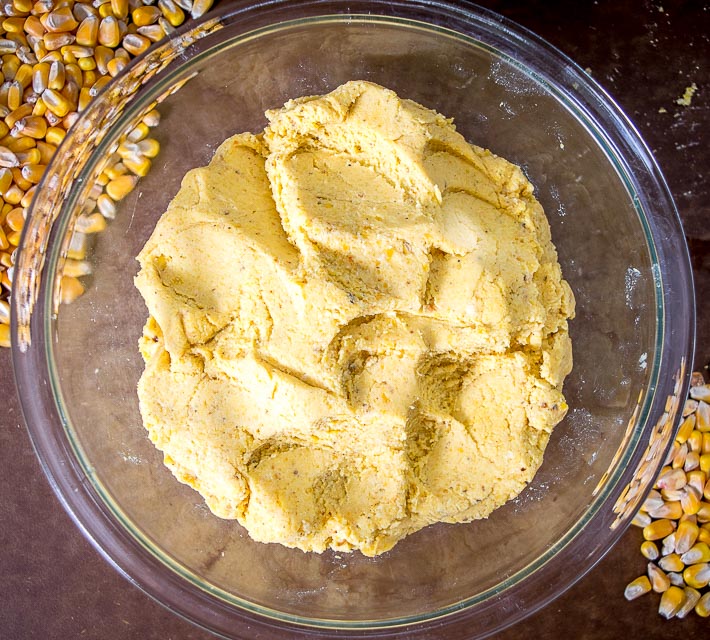
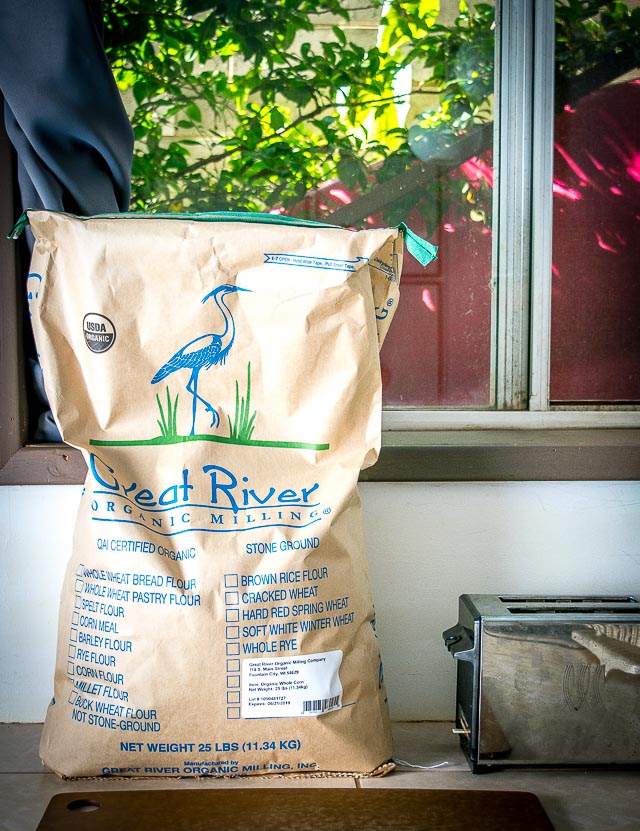
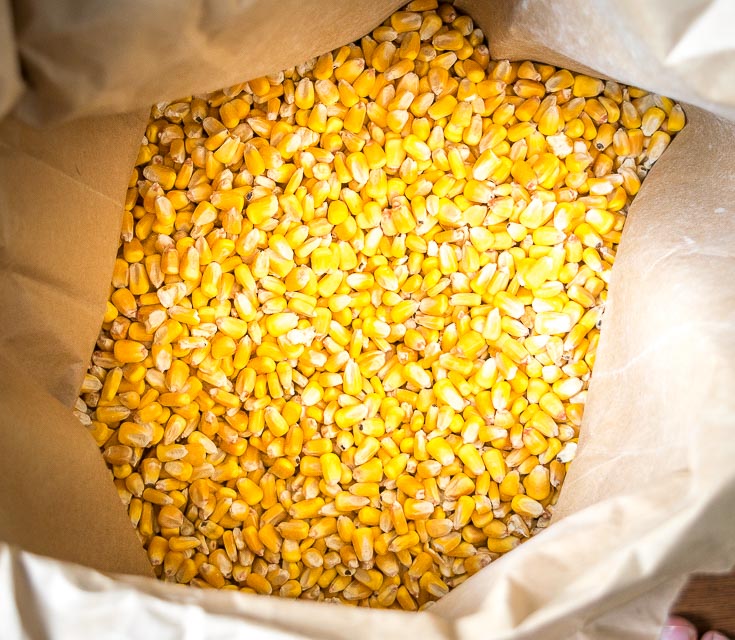


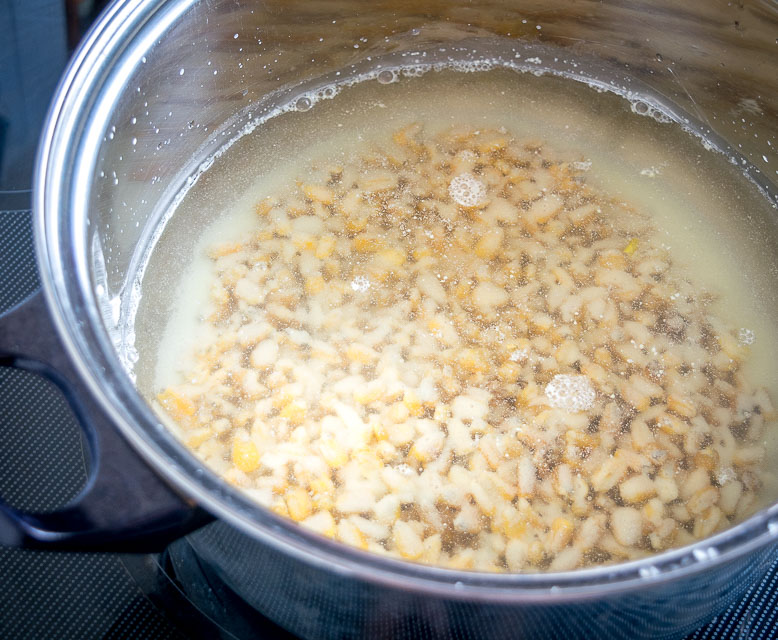
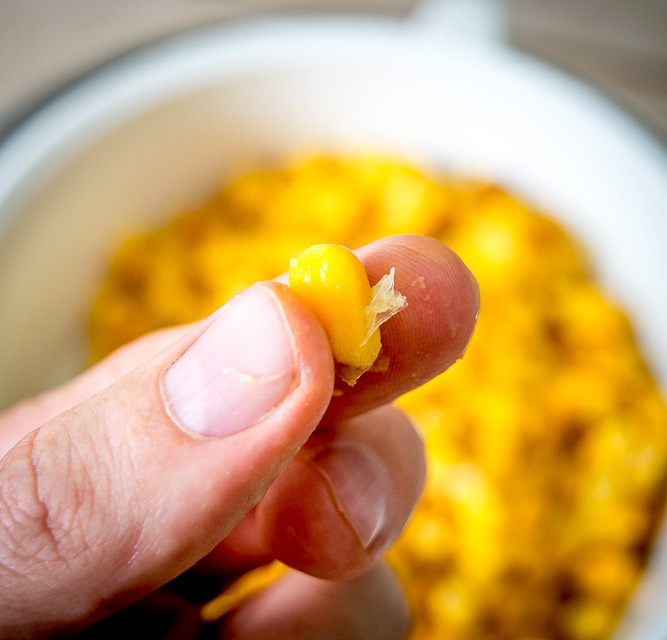

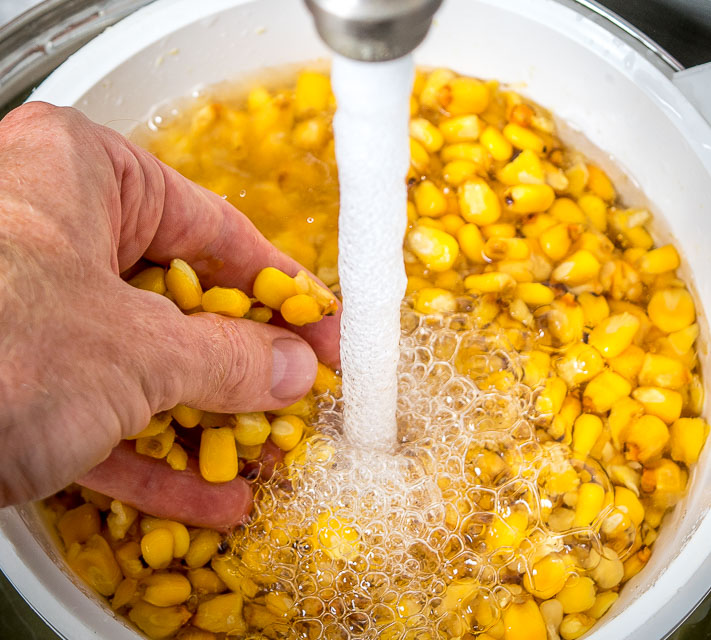
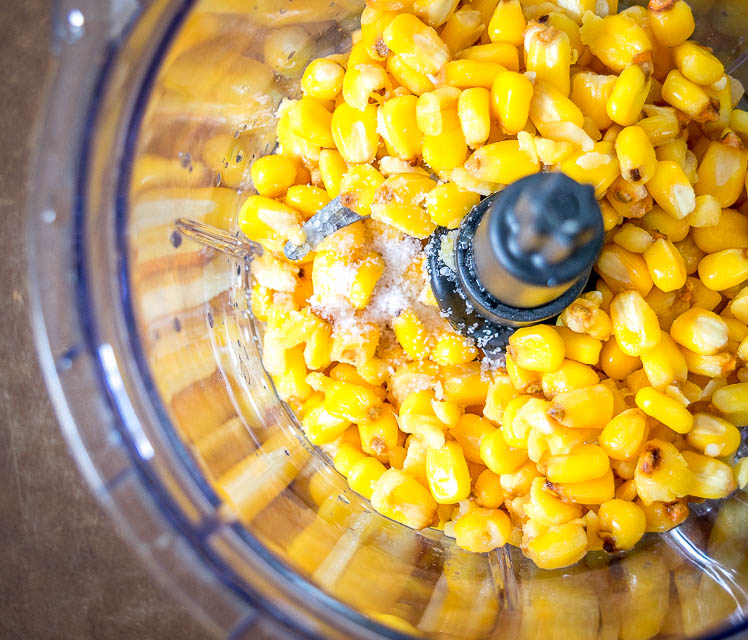
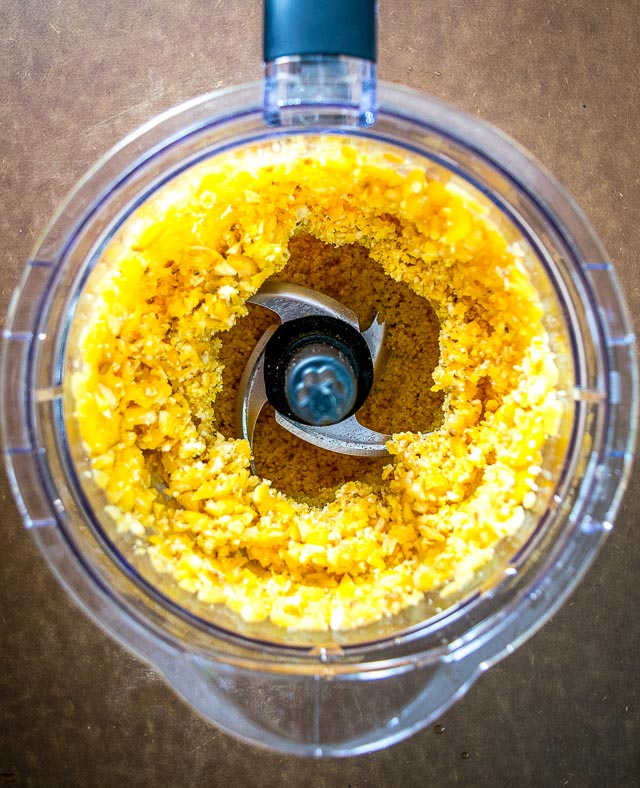
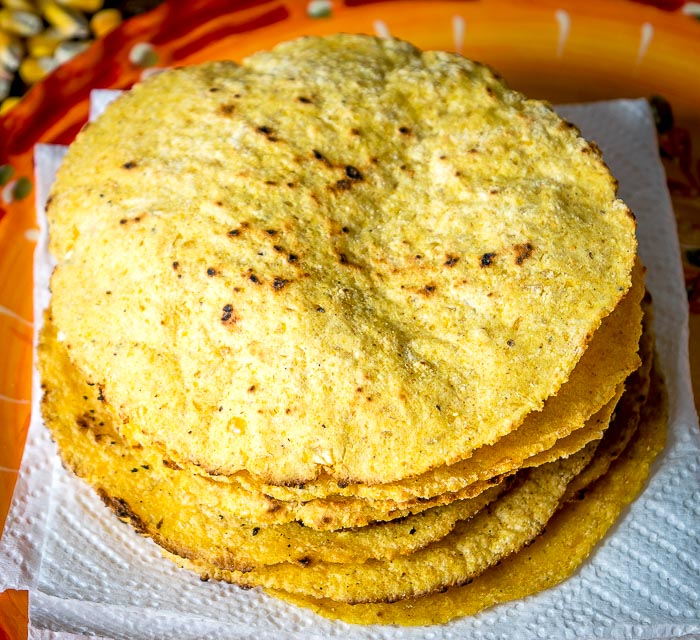
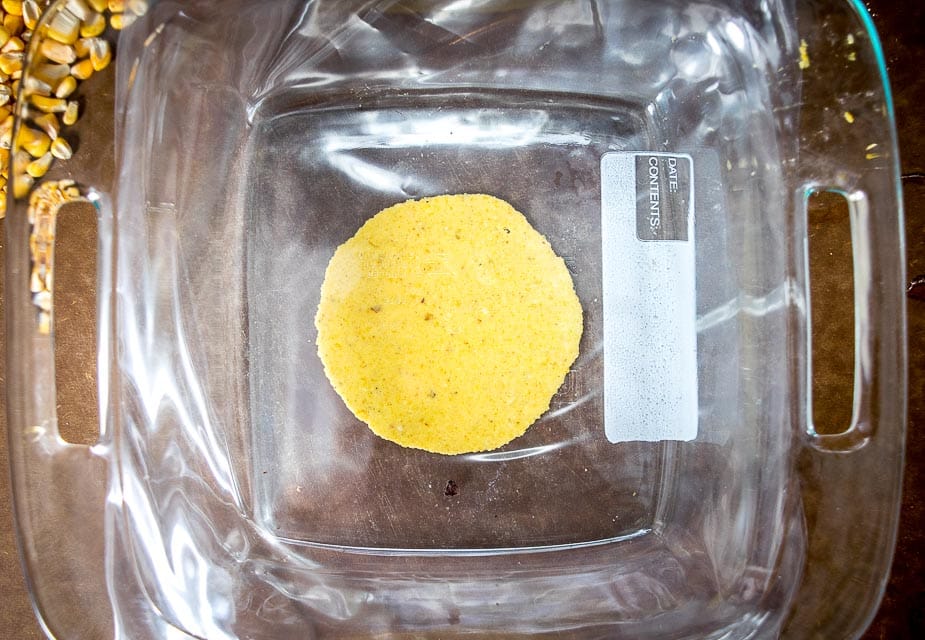

Atzimba
Hi!!! Thank you for sharing this.
If you make more than 2 cups or corn, would you double the cal?
Patrick
Hi Atzimba, yeah I would increase the Cal if you are increasing the corn. So for 4 cups of corn I would use 2 tablespoons of calcium hydroxide. Cheers.
Angie
Hi there... is there another way to dry out the dough? Masa harina is sooo not available in Namibia.... or at least I haven't seen it here..
Patrick
Hey Angie, good to hear from you! Let's see....
I've gotten emails from peeps who have not had to add any masa harina at all. If you are frugal with the amount of water you add to get it to blend then your batch might not be as wet as my batch was.
There's also another trick to consider but I haven't experimented with this one yet. If your masa dough is wet after grinding it then you can put it in a low temp oven for a bit (250F or so) to see if that dries it out. Definitely keep an eye on it as I'm not sure exactly how long it would take for some of the moisture to burn off, but it's worth considering if your masa is wet and sticking to your hands when you handle it.
Okay I hope that helps a bit. Cheers.
Pamela
I have found that if I leave it in the fridge for a day before using it, even in a plastic bag, that dries it out to the perfect consistency with no Masa harina needed.
Patrick
Ahh great to know Pamela, thanks much for mentioning this! Cheers.
Ina
I just found your page and am so excited to try this! Can the dough be stored in the refrigerator for any length of time? Thanks so much!
Patrick
Hi Ina! Yeah it will keep in the fridge for a few days. I usually wrap it in layers of plastic and foil. Cheers.
Veronica Reinhardt
OMG!!! I will never use Masa Harina again! (well maybe when I want last minute tortillas....)
Awesome and EASY! Yum!!!
Patrick
Ha so glad you tried this out Veronica. Cheers.
Michele Todd
Having used masa harina for tortillas (having to order online, as mexican grocers are few and far between in blighty) I decided to make the real thing.
So I used this recipe with a bag.of dried corn from an Asian/indian supermarket (marked as 'popcorn) which, may not be the type of corn used, but I'm sure there wasn't much difference when came to the taste ( and smell....its gorgeous!)test!?!
Anyway, the whole family love them and that keeps me happy.
Patrick
Hey thanks much for your note Michele, so good to know that you had success with that particular corn. Cheers.
Christine
I grew green Oaxacan corn this summer so that I can make traditional Zapotec Tamales for Christmas. I’m super excited to see the beautiful green mass that this will make!
Patrick
Yowsa I want to see that green masa too! Hope they turn out well.
sls4ak
Adding ashes, lye, to enhance food stuffs is ancient indigenous alchemy. Mushroom ashes added to tobacco to potentiate the nicotine (Alaska), to coca leaf, and corn all ancient means of making things more bioavailable. I believe that the tamale dough in Oaxaca was made with lye. It's been a long time since I was last there for very long.
Sue McCoy
I live in Austin Tx. We have an amazing grain mill nearby. Barton Springs Mill. They carry a wonderful selection of grains and corn meal/grits/polenta. I am wondering if I could use their Hopi Blue Corn or Oaxacan Green Corn instead of the field corn? Is there a difference? Would I have to alter the recipe at all? My goal would be to make the sourdough corn tortilla recipe you have listed. Thank you.
Patrick
Hi Sue! I'm not familiar with those varieties but if they are dried kernels then most likely they will work with this recipe. In general I feel like the process is so forgiving that it's probably worth a go (assuming dried kernels) -- especially with such alluring names 🙂 Cheers.
For reference, here's a good article on the difference between sweet and field corn:
https://www.myfearlesskitchen.com/difference-between-sweet-corn-and-field-corn/
David Becerril
I have used plain dried corn, not field corn, in the past, no problem, but be sure to cook the corn as described above w/ the CaOH and let sit overnight to fully hydrate and soften, then rinse off the "skin" of the corn before grinding.
Ben F
I know this is a few months old now, but we just followed this process with Hopi Pink corn from our garden, which as you can imagine is pretty similar to Hopi Blue, and they came out great! We bought the seeds because description in the seed catalog said they make "beautifully soft tortillas".
The only sad part was that the pink color was all on the outside, so instead of delicious pink tortillas they were delicious white tortillas.
And thanks, Patrick, for posting this process! We ended up not needing to add more dried masa harina when making tortillas, the dough came out of the food processor at just the right consistency. Probably could have added more water and gotten a finer grind, but there was no grittiness on the final product, so we were very happy. Plus it saved us a trip to the store during a public health crisis, which is a bonus.
Patrick
Ahh great to know, thanks much for your notes Ben!! Cheers.
Alex Moncada
Hi again, in regards to Sue McCoy's question about using Hopi Blue Corn or Oaxacan Green Corn from her Texas Mill, I feel like it's a matter of taste. Ever try blue corn tortillas or blue corn chips? It's my opinion that some blue corn varieties are tougher than say the white corn variety.
Yep, I agree with Patrick, it's worth a go!
Cathy Weeks
Simmered the corn for 45 minutes. Outer layers were hydrated, center core was still dry and starchy. So far so good. So then I let it soak in the lime water more than 12 hours, and when I bit one of the kernels in half this morning, the center section is STILL dry and starchy. Is that correct?
Patrick
Yeah it's fine to have the center still be a little dry Cathy. It will depend a little on the kernel size but they won't necessarily hydrate all the way through even with an overnight soak.
Taylor
Thank you so much for posting this recipe! I admire Chefs who love to teach! I’ll be posting pictures of the papusas we make with this masa! Because of you and this recipe, you’re brining me and my family together to share cherished memories and for that, I am very grateful.
Patrick
Hey thanks Taylor, so glad your fam is enjoying the masa!